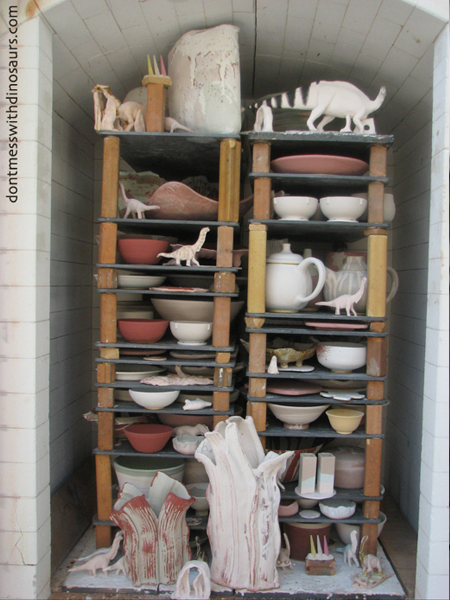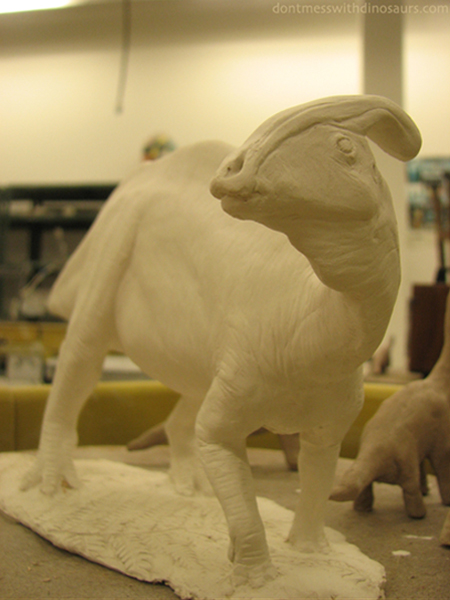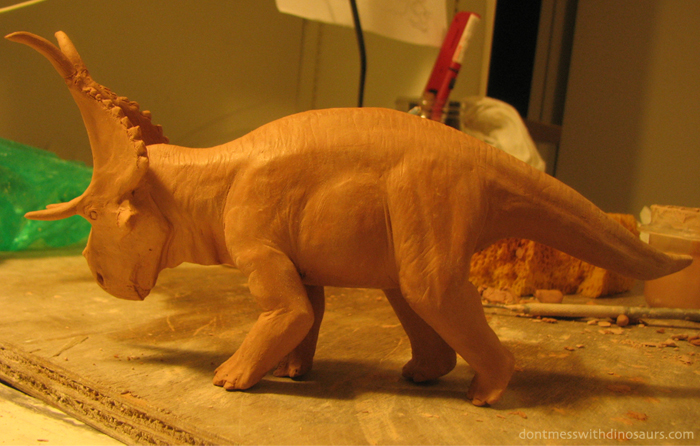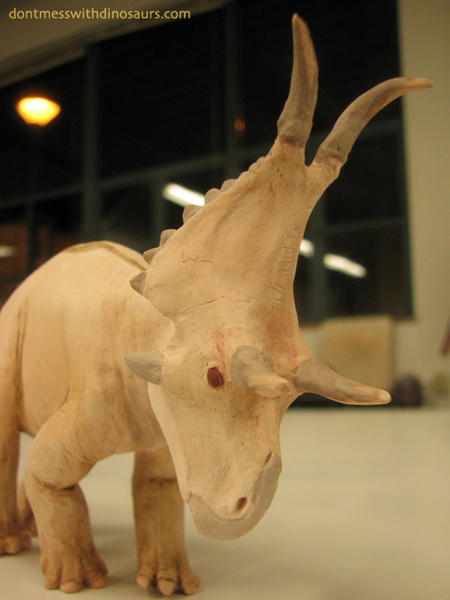Kilnloads o’ Dinos
Hey so I haven’t posted much progress on my ceramic sculptures because I’ve been really busy finishing them by the firing deadline. Here’s what the loaded kiln looks like:

How many dinosaurs can you find?!?!
Well… in addition to the Majungasaurus I posted earlier I created a similar sized Parasaurolophus cyrtocristatus and a slightly smaller Diabloceratops eatoni (shown here as unfired clay sculptures).


I also created a small brachiosaur model from which I created two rubber molds. From those rubber molds I cast about 25 little brachosaurs…
All of that since last Friday (7/23), with enough time to dry for their first firing by the following Wednesday (7/28). After that first firing the pieces are glazed and/or stained and then loaded into the kiln pictured above for their final high firing (which will turn them into rocks). So yeah, I’ve been real busy!
Here’s my Diabloceratops after being fired for the first time, now with a bit of glaze applied to its horns and some mineral stain on its eyes and back:
What’s this? Two firings? Yeah. Once the clay sculpture is completely dry it is fired for the first time to 1825 degrees. This is called the bisque firing. Bisque firing causes the clay particles to melt just enough to bond the form into a porous terra-cotta like substance. We bisque for several reasons. Primarily, it transforms the brittle dry clay into a more durable substance that is no longer water soluble (unlike clay, which turns to goop when soaked with water.) Also this porous low-fire pottery readily absorbs water. This allows us to apply glazes. Glazes are basically powdered glass, clay and mineral colorants which we mix with water. When we dip or paint or spray this glaze mixture onto our bisque-fired pieces, the porous bisque-ware absorbs the water and causes the glaze particles to stick to the form. Or, as my friend Drew explains it; you know when you throw wet mud at a brick wall and it sticks even after the mud dries? Same concept.
See how the color has changed since before it was fired? It’s going to change much much more. In the second firing temperatures inside the kiln will reach over 2300 degrees F (lava temperature) and the clay particles will become red hot and semi-molten. The form will become denser as minerals vapourize and the clay particles slowly flow together, closing tiny pores and fissures once present in the bisque-ware. Glazes will become completely molten and they will move. The mineral colorants in both clay and glaze will go through the complex chemical reactions that will ultimately give them their final color. And each firing it is a little different. Subtle variations in the chemistry of both the piece being fired, and the kiln environment it’s being fired in can have drastic effects on the look and feel of a piece.
Even the most ancient and experienced ceramists will acknowledge that the results of a firing are never completely predictable. As the kiln door closes we must let go of our work in this final crucial stage of its development to mature without us. If we have not done our work well the laws of physics which govern this art will show us what we have actually created. And if we have done our work well, with attention to detail and upon good instinct, our sense of aesthetics will speak through the form, sometimes in unanticipated and surprising ways.
Now, we can only wait.




Preeti on 17 Apr 2011 at 2:06 pm #
Hi!
I was googling for Ceramic bisque dinosaurs, velociraptors in particular. I must say I love what you’ve done so far! Keep up to good work!